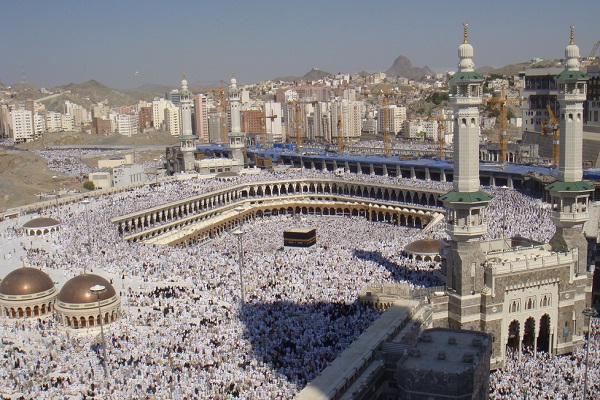
Crane Collapsed in Mecca Just Days Before Muslim Pilgrimage Starts
- By C Barnett --
- 14 Sep 2015 --
![By Al Jazeera English (Al-Haram mosque) [CC BY 2.0], via Wikimedia Commons](http://www.worldreligionnews.com/wp-content/uploads/2015/09/Kaaba_at_al-Haram_Mosque.jpg)
Disaster in Mecca caused several deaths and left hundreds of pilgrims injured.
Over one hundred people died as a crane toppled over the Grand Mosque in Mecca on September 11, reported the Civil Defense Authority of Saudi Arabia. The accident took place less than two weeks before the yearly Islamic “Hajj” pilgrimage. Over 200 people got injured in the accident, said the Civil Defense authority of Saudi Arabia.
According to General Suleiman al-Amr, Civil Defense Authority’s director general, all people at the spot who got wounded or were found dead, were taken to the hospital. He further added that the area was badly damaged (cranes rocked and trees uprooted) because of strong rains and winds.
A statement was released by the Medina and Mecca’s administration spokesman, which details that the crane hit into a section of the mosque where people gather around the Kaaba, towards which Muslims, all over the world, face to offer their prayers.
The crane collapse at Mecca's Grand Mosque in #Makkah kills at Least 107 People and 238 injured. Soo deeply sad for family / friends!!!!!!
— JONATHAN M. MELLOR (@JonathanMellor) September 12, 2015
Pictures showing pilgrims wearing blood-stained robes were being circulated all over social media. Some pictures also showed the left over parts of the crane, which apparently fell through the ceiling.
The authorities in Saudi Arabia work hard while preparing for the several million Muslims who gather in Mecca to be a part of the religious pilgrimage. Last year, the permitted number to undertake the pilgrimage was reduced. It was done keeping in mind the safety of those performing the Hajj pilgrimage due to construction work for extending the Grand Mosque.
[Warning: Graphic Images]
The Hajj is known to among the biggest religious gatherings all over the world. However, it has been prone to multiple disasters and destruction, primarily from stampedes. It is because the pilgrims are in a rush to go through the rituals before turning back home. In 2006, hundreds of pilgrims lost their lives in a stampede.
Since then a large sum of money has been invested by the Saudi authorities in expanding the primary Hajj sites while also improving the transport system in Mecca to help prevent further disasters.
The sacred city of Islam is often rung by security services with checkpoints as well as other measures to prevent people without proper authorization from being a part of the pilgrimage. Such preventive measures, which are aimed at minimizing the pressure of the crowd that can cause stampedes and other disasters, have been increased in the recent years since security threats are on a rise all over the Middle East.


















